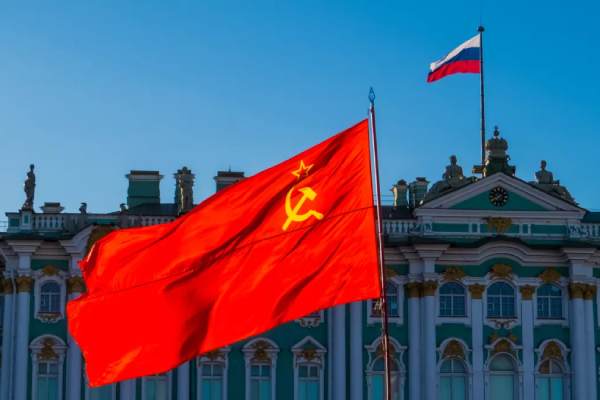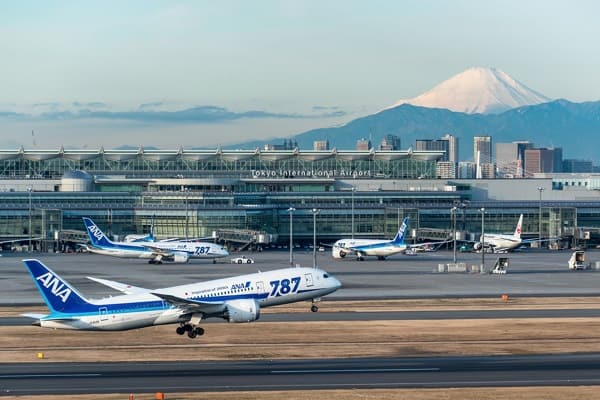List of Countries in the former Soviet Union
The Soviet Union was the largest country in the world, with 15 nation-states annexed, until its collapse in 1991. The Soviet Union, also known as the Union of Soviet Socialist Republics (USSR), was a socialist state formed by Vladimir Lenin in 1922, considered the largest country in the world during its short existence.
However, the country collapsed in 1991, which ended up giving rise to the independence of the countries that made up the former Soviet Union. These were Armenia, Moldova, Estonia, Latvia, Lithuania, Georgia, Azerbaijan, Tajikistan, Kyrgyzstan, Belarus, Uzbekistan, Turkmenistan, Ukraine, Kazakhstan and Russia.

Discover the countries of the former Soviet Union
| Subdivision of the USSR | Current country | Independence Day |
|---|---|---|
| Estonian RSS | Estonia | May 8, 1990 |
| Lithuanian RSS | Lithuania | March 11, 1990 |
| Latvian RSS | Latvia | May 4, 1990 |
| Azerbaijan RSS | Azerbaijan | August 30, 1991 |
| Georgia RSS | Georgia | April 9, 1991 |
| Russian SFSR | Russian Federation | December 12, 1991 |
| RSS Uzbek | Uzbekistan | August 31, 1991 |
| Moldova RSS | Moldavia | August 27, 1991 |
| Ukrainian RSS | Ukraine | August 24, 1991 |
| Belarusian RSS | Belarus | December 10, 1991 |
| Turkmen RSS | Turkmenistan | October 27, 1991 |
| Armenian RSS | Armenia | September 21, 1991 |
| RSS Tajik | Tajikistan | September 9, 1991 |
| Kazakhstan RSS | Kazakhstan | December 16, 1991 |
| RSS Kyrgyz | Kyrgyzstan | August 31, 1991 |
Armenia
The Republic of Armenia was known in the former Soviet Union as Soviet Armenia. The country, which is 11,500 square miles, was among the constituent republics of the USSR in December 1922.
The country was created in 1920 during a period when the Soviets took control of Armenia’s first republic. It remained under this control until September 21, 1991, the date on which the country was proclaimed as an independent state. Since then it has undergone significant degrees of development.
Moldavia
Moldova belonged to the former Soviet Union from 1940 until 1991, officially known as the Moldavian Soviet Socialist Republic or MSSR. It was created on August 2, 1940 in a region of Romania known as Bessarabia.
The country was only declared a sovereign state on June 23, 1990, but was officially known as the Moldavian Soviet Socialist Republic until May 23, 1991. After receiving its independence, Moldova was affected by a civil war.
Estonia
Estonia was part of the three Baltic States in northeastern Europe and became known as the Estonian Soviet Socialist Republic or ESSR when it became part of the former Soviet Union. The country was incorporated into the USSR on July 21, 1940 after an attack by Soviet troops on June 17, 1940.
However, during the years 1941 to 1944, the ESSR was occupied by Nazi Germany. On May 8, 1990, the ESSR was renamed the Republic of Estonia, and its independence was recognized by the former Soviet Union on September 6, 1991.
Latvia
Another Baltic state located in northern Europe, Latvia was incorporated into the USSR during World War II on July 21, 1940 as a puppet state of the former Soviet Union.
During this time, the country came to be known as Soviet Latvia or Latvian SSR. After being part of the USSR, the European community and the USA refused to recognize the country’s annexation to the Soviet Union.
With the end of the USSR, the country restored its official name as the Republic of Latvia, where it achieved independence on August 21, 1991. After that, the country’s main objectives were joining the European Union and NATO in 2004.
Lithuania
Soviet Lithuania or Lithuanian SSR belonged to the Soviet Union from the 1940s until 1990. Covering approximately 25,000 square miles, the country is one of the three Baltic states in northern Europe.
Like Estonia, Lithuania was also occupied by Nazi Germans between 1941 and 1944, but the territory was later occupied by the former Soviet Union for the next 50 years.
On May 18, 1989, Lithuania declared itself a sovereign state and, despite the Soviet Union considering the action illegal, the country was reestablished and declared an independent nation.
Georgia
The Republic of Georgia has an area of 27,000 square miles that is located at a crossroads between Eastern Europe and Western Asia. The country became one of the constituent republics of the Soviet Union on December 30, 1922, where it came to be called Soviet Georgia or Georgian SSR.
On November 18, 1989, the country declared its independence and became known as the Republic of Georgia. After its independence, the country struggled for most of the 1990s with an economic and civil crisis.
Azerbaijan
Formerly known as Soviet Azerbaijan or Azerbaijan SSR, it is a country located at the crossroads of Southeast Europe and Southwest Asia. Its name was changed only on November 19, 1990, when it began its process of independence from the USSR.
The country only had its independence officially recognized by the former Soviet Union in 1991. However, the Constitution of the Azerbaijan SSR was used until 1995, the year in which the country adopted its new constitution.
After its independence, Azerbaijan became a member of the Non-Aligned Movement and was elected a member of the Human Rights Council by the United Nations General Assembly on May 9, 2006.
Tajikistan
Located in Central Asia, Tajikistan is known for being a mountainous and landlocked country. During the former Soviet Union, the country was known as Soviet Tajikistan or Tajik RSS.
The Soviet state of Tajikistan lasted between 1929 and 1991, and during a period the country had an expansion in its agriculture, mainly in cotton production in the south of the country. This resulted in improved irrigation infrastructure at the site.
The country achieved its independence on September 9, 1991, and a few days earlier it was renamed the Republic of Tajikistan. After its independence, the country fell into a civil war that involved several factions.
Kyrgyzstan
As a mountainous country covering 77,000 square miles, Kyrgyzstan was where the former Soviet Union established its power in 1919, but Soviet Kyrgyzstan was only declared part of the USSR on December 5, 1936.
The country achieved its independence on May 25, 1991 and in 1993 it changed its name to the Kyrgyz Republic. Upon achieving independence, the country joined the Organization for Security and Co-operation in Europe (OSCE) and the UN. However, for much of the new millennium, the country suffered immense political instability.
Belarus
Known as Soviet Belarus or BSSR, the region had been under Russian rule since 1919. However, the Lithuanian Belarusian SSR emerged and caused a dispute between the former Soviet Union and Poland.
The western region of modern Belarus remained part of Poland for a time until it was annexed to the BSSR. The Belarusian SSR is a founding member of the USSR.
During the 1920s and 1930s, the Soviet Union added new economic and agricultural policies to the territory, generating political repression and famine in the region. After a period, a mass grave was discovered in Minsk where the victims who were executed between 1937 and 1941 were. The act was related to the USSR, which made the people of the region seek their independence, which was declared on July 27, 1990.
Uzbekistan
Soviet Uzbekistan was established on October 27, 1924, and is a landlocked region located in Central Asia. Between 1941 and 1945, around 1.5 million Uzbeks fought against Nazi Germany during World War II.
In June 1990 the region declared its sovereign state, and in August 1991 it was able to declare its independence. The country currently has the second highest rate of modern slavery in the world, at 3.97%.
Turkmenistan
Turkmenistan was annexed to the Russian empire and later established as one of the constituent states of the former Soviet Union in 1924. The region, which covers an area of 190,000 square miles, had its agricultural practices reorganized, which led to the nomadic lifestyle in the country.
In 1990 the country declared its sovereignty, but it was not yet ready for independence, so it chose to preserve the USSR. But in 1991 the country officially declared its independence from the Soviet Union and since then it has maintained a neutral stance on international affairs.
Ukraine
The Ukrainian SSR was admitted to the Soviet Union on December 30, 1922. The country covering an area of 233,000 square miles was a founding member of the UN, but the USSR acted as its legal representative in matters relating to countries outside the former Soviet Union.
When the USSR was dissolved, the Ukrainian SSR was renamed Ukraine, and the country received approval of its new constitution in 1996. After its independence, the country continued to pursue allegations in foreign courts against the Russian Federation in hopes of regaining its share of foreign ownership.
Kazakhstan
Known for being the largest landlocked country in the world, covering a total area of 1.05 million square miles, Soviet Kazakhstan was established in 1936 as part of the Soviet Union.
With the dissolution of the USSR, the country became a member of the constituent republics of the Soviet Union and declared its independence. Currently, the country is known for having governance characterized by the suppression of political opposition and human rights abuses.
Read Also: The Most Dangerous Countries In The World
Russian Federation
Considered the largest country in the world and located in Eurasia, the Russian Federation has 6.6 million square miles, and together with other countries formed the Soviet Union.
Soviet Russia was the largest member of the USSR and dominated the movement throughout its 69-year duration. Before 1991, the Soviet Union had the second best economy in the world, which was later affected by inflation.
With the dissolution of the former Soviet Union, Russia faced a major economic crisis which generated high mortality rates along with a low birth rate and a collapse in social services. During this period, millions of Russians were affected by poverty, which rose from 1.5% to around 49%.

![The 10 Richest Women in South Africa 2022 [Forbes Updated] 3 The 10 Richest Women in South Africa 2022 [Forbes Updated]](https://allroundgist.com/wp-content/uploads/2022/03/richest-women-in-south-africa-img_11221-min.jpg)




![The 10 Best Rappers In Kenya 2022 [Updated List] 8 The 10 Best Rappers In Kenya 2022 [Updated List]](https://allroundgist.com/wp-content/uploads/2022/03/best-rappers-in-kenya-img_1-min.jpg)